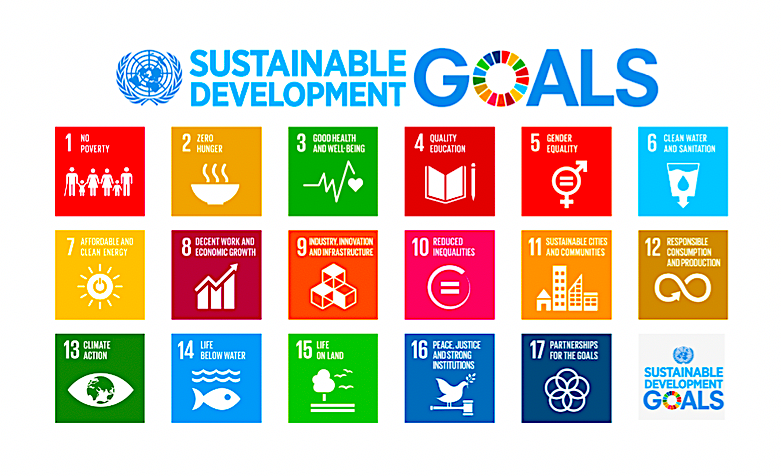In 2015, the United Nations (U.N.) defined 17 Sustainable Development Goals that challenged the world to become more sustainable by the year 2030 (see below). The manufacturing, mining, process, and affiliated industries consume a large percentage of the planet’s energy supplies, utilize a large percentage of the earth’s natural resources, such as crude oil, minerals, timber, water, etc., and produce a sizeable percentage of various emissions into the atmosphere and hydrosphere. Manufacturing and heavy industry must, of course, carry on because society requires the goods and services that we provide. However, we have a responsibility to do so as sustainably as possible.
Over the span of my 30-year career, I’ve spent most of my professional time and energy improving the profitability of plants and facilities by boosting asset reliability, which increases production throughput (revenue) and reduces the life-cycle cost of ownership. In the process, I’ve tangentially focused on safety because, after all, reliable equipment is safe equipment. Now, I’m going further.
Some readers may be aware that I’m entering the penultimate semester of a master’s degree in environmental sustainability at Harvard University (yes, old dogs can occasionally learn new tricks). While I am one of the older “kids” in class, I must say that I’m giddy with enthusiasm, especially for sustainable manufacturing. That’s because most of the reliability principles that make our plants and facilities safer and more profitable also can make them more sustainable.
For that reason, in the coming months, I’ll focus much of my attention on topics related to sustainable manufacturing. There’s a lot going on in this arena. I want to begin the discussion with the role our RAM community can play in making equipment and manufacturing processes more sustainable and, simultaneously, achieving safety, production, and profitability goals. It turns out there’s plenty to discuss. In fact, the United Nations Sustainable Development Goals shown below are just a start. (We’ll dive deeper into them and their implications for plants and facilities in future issues of The RAM Review.)

On a related note, the American Society for Testing & Materials, now known as ASTM International (ASTM, astm.org), has created a technical committee (E60.13) of which I’m a voting member) to provide standards for sustainable manufacturing. (They’re excellent.) I’ll be summariziing some of these standards later, as well as share insights on their implementation at your site. ASTM has also established a new and notable peer-reviewed journal on the topic. I’ll highlight various material from this publication going forward.
While we’re on the subject of sustainability-related resources and standards, note that the Organization for Economic Co-operation and Development (OECD, oecd.org) has put some great materials in its “Sustainable Manufacturing Toolkit.” The International Organization for Standardization (ISO, iso.org) has created a number of important environmental standards, including ISO 14040 and 14044, which apply to analyzing and estimating the life-cycle environmental impacts associated with the production of various products. (This analyzing and estimating process is similar to life-cycle cost analysis that we employ in reliability engineering, but with a focus on energy and materials usage and associated environmental impacts.) And, of course, the U.S .Department of Energy (USDOE, energy.gov) has developed a wealth of useful guidelines for increasing efficiency in electrical systems. The list goes on and on.
I’m truly excited about this upcoming editorial journey. One of the most compelling aspects for me is the fact that we can reduce the environmental impact of our plants and facilities and make more money and produce a safer work environment at the same time.
I hope that you’ll join me in this journey and participate with your questions and comments.TRR
ABOUT THE AUTHOR
Drew Troyer has 30 years of experience in the RAM arena. Currently a Principal with T.A. Cook Consultants, he was a Co-founder and former CEO of Noria Corporation. A trusted advisor to a global blue chip client base, this industry veteran has authored or co-authored more than 250 books, chapters, course books, articles, and technical papers and is popular keynote and technical speaker at conferences around the world. Drew is a Certified Reliability Engineer (CRE), Certified Maintenance & Reliability Professional (CMRP), holds B.S. and M.B.A. degrees, and is Master’s degree candidate in Environmental Sustainability at Harvard University. Contact him directly at 512-800-6031 or dtroyer@theramreview.com.
Tags: reliability, availability, maintenance, RAM, sustainability, sustainable manufacturing, energy efficiency, safety, United Nations, ASTM, OECD, ISO, USDOE



